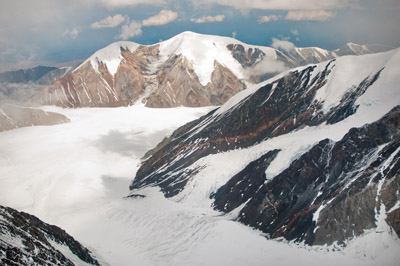
2 May 2024–A recent study of the crust below south-central Alaska, across the Denali Fault, suggests there may be a reservoir of magma located below the enigmatic Denali Volcanic Gap, researchers reported at the Seismological Society of America (SSA)’s 2024 Annual Meeting.
The Denali Volcanic Gap (DVG) is the roughly 400-kilometer-long gap in volcanic activity between the Wrangell volcanoes to its east and the volcanoes of the Aleutian Arc to its west. The Pacific tectonic plate subducts below the North American plate at the site of the gap, which could potentially provide material for volcanoes, so the lack of active volcanism remains a mystery.
Santiago Rabade of the University of Utah and colleagues deployed a geophone array of 306 stations placed at one-kilometer intervals across the Alaska Range for a month to get a better glimpse of the subsurface in the DVG. Using the ambient seismic data collected by the array, the researchers built a model of the top 16 kilometers below the Alaskan range based on the velocity of seismic shear waves. Seismic waves travel slower through more liquid, less dense material, so low-velocity zones can indicate the presence of magma or water below the surface.
The researchers uncovered a significant low-velocity zone extending to at least 12 kilometers below the northern flank of the Alaska range. Located above the subducting Pacific plate, the low-velocity zone may represent a magma reservoir generated by the accumulation of melt of subduction-related material, Rabade and colleagues suggest.
